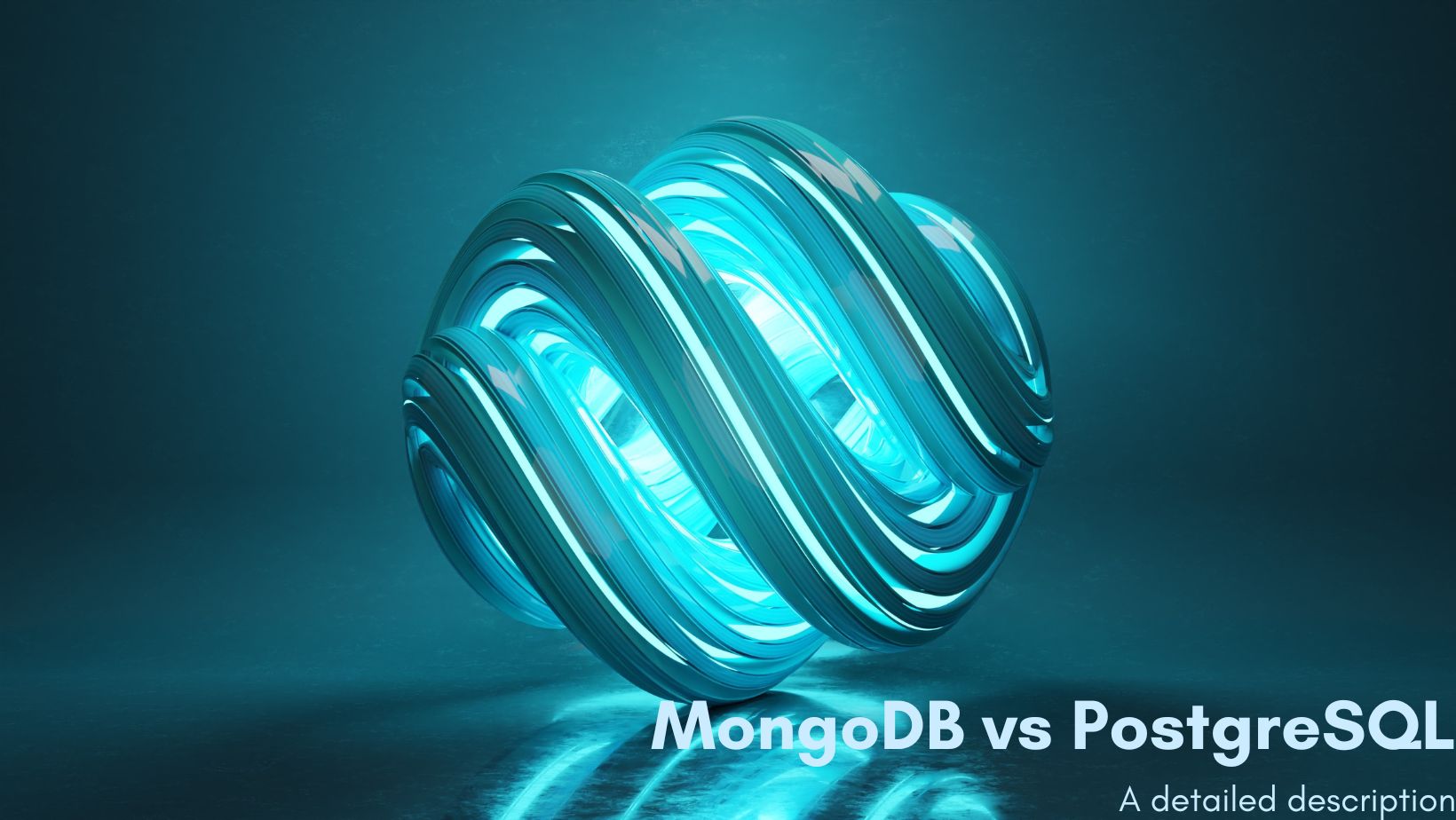MongoDB vs PostgreSQL: A Detailed Database Comparison

Everyone has been there – starting a new project and wondering what database to use. Deciding between MongoDB and PostgreSQL? NoSQL vs SQL database? Open source vs Proprietary database? Surely there should be one that suits your project to a tee.
According to a 2022 Statista survey, PostgreSQL and MongoDB are two of the most popular databases today, ranking 4th and 5th, respectively. Both databases share a few similarities and striking differences in terms of architecture, data model, commands, use cases, security, and more.
This article will explore both PostgreSQL and MongoDB databases in detail and assist you in making an informed decision.
Let's get started.
Overview of MongoDB and PostgreSQL
MongoDB
MongoDB is a user-friendly, schema-free, proprietary NoSQL database written as JSON-like (BSON) documents for storing data. It is a document database that uses BSON (stands for binary JSON), which offers more data types than regular JSON data, such as floating point, date, etc. See how we convert and store MongoDB BSON to PostgreSQL JSON.
Unlike most traditional databases using SQL, MongoDB uses a different syntax and structure, which is relatively easy to learn, even for non-programmers. NoSQL databases like MongoDB are well suited for managing semi-structured or unstructured data. You can easily add new fields or data types without explicitly declaring the document's structure, making it more flexible for users to view the data, edit it, or update the schema as much as they want. This flexibility also enables MongoDB to process and handle large amounts of data faster than many other databases.
Even better, MongoDB provides drivers for many popular programming languages such as Python, Java, and JavaScript, enabling users to interact with data directly from their application's native code. This integration is achieved by using MongoDB libraries, eliminating the need to introduce complex languages like SQL to the application.
Some of the many use cases for MongoDB include content management, eCommerce, real-time analytics, mobile applications, social networks, and many more applications that require handling vast amounts of unstructured or semi-structured data.
Read More: 5 MongoDB-Compatible Alternatives
PostgreSQL
PostgreSQL is a widely used, robust, open-source relational database management system (RDMS) released in 1989, making it decades older than MongoDB. Compared to proprietary relational databases like SQL Server and Oracle, It's a cost-effective alternative for building scalable, enterprise-grade databases.
PostgreSQL boasts of a dedicated and thriving community of contributors and enthusiasts that regularly upgrade, develop, and maintain the database system. With PostgreSQL, you have all the capabilities and features needed in a relational database. It stores data as structured objects containing rows and columns, ideal for handling large complex queries and transactions.
Some everyday use cases for PostgreSQL include web applications requiring high reliability and stability, such as bank systems, process management applications, analytics, geospatial data, and many more.
Comparing MongoDB vs PostgreSQL
Let's compare MongoDB and PostgreSQL across different features and criteria.
Data Model
Regarding data models, MongoDB and PostgreSQL follow different approaches, with MongoDB using a document-based data model, while PostgreSQL uses a relational data model.
Each piece of data in MongoDB is stored as a JSON-like document containing dynamic schemas – each document can be structured differently, and new fields can be added at any time using key-value pairs. This makes MongoDB perfect for scenarios where the data constantly changes and there's no defined data structure, such as social media platforms where users can upload their own content.
Contrast this with PostgreSQL, which requires a defined database schema and is used to store data in traditional table format with predefined columns and data types. PostgreSQL is more suitable for applications that need to maintain relationships among different data types, such as e-commerce sites or financial applications.
Query Language
MongoDB and PostgreSQL use different query languages, which are pretty different in syntax and functionality.
To illustrate this difference, PostgreSQL uses Structured Query Language (SQL) to query relational databases composed of multiple tables with a defined relationship between them. SQL is a widely known language that cuts across many great tools and platforms, including Oracle and MySQL. SQL databases enable you to write complex queries and run different operations on relational data.
Below is an example of a typical SQL query that selects all columns and prints out all records from the user table.
SELECT * FROM users;
Unlike PostgreSQL, MongoDB does not support SQL queries natively. Instead, it has its own query language – MongoDB Query Language (MQL). MQL is built to interact specifically with MongoDB databases and match similar features and flexibility as in SQL databases. With MQL, you can query any field, embedded documents, or nested arrays in the MongoDB database.
db.users.find({
hobbies: { $all: ['reading', 'cooking'] }
})
ACID Compliance
ACID (Atomicity, Consistency, Isolation, and Durability) capabilities ensure that database transactions are always consistent and reliable, which is critical when handling highly sensitive data. PostgreSQL is ACID-compliant by default, making it highly suitable for databases that require transactional workflows.
On the other hand, while MongoDB does support ACID transactions, it's not entirely ACID-compliant by default. Instead, it offers several flexible options for data consistency and reliability, such as read/write concerns and multi-document transactions. These features allow you to configure your database to the level of data consistency and reliability you need.
Performance and Scalability
Comparing the performance of MongoDB and PostgreSQL is a complex task due to their distinctive approaches to data storage and retrieval.
PostgreSQL's rigid schema and strong typing may result in slower inserts and updates due to server-side type checking and schema validation. However, PostgreSQL's support for relations and JOINs allows users to create complex, structured data models that can return organized data from multiple tables with a single JOIN query.
PostgreSQL uses a vertical scaling strategy to manage vast amounts of data and increase write scalability by adding hardware resources such as disks, CPUs, and memory to existing database nodes.
Although PostgreSQL may not match the raw insertion speed of MongoDB, its exceptional ACID compliance ensures safe and reliable transaction processing, preventing partial writes by executing entire transactions or none at all.
On the other hand, MongoDB's flexibility in structuring data makes it ideal for applications that require rapid execution of queries and for handling large amounts of data, as there are no server-side checks or validations required before inserting data. While MongoDB does not support relations or JOINs like PostgreSQL, it offers better query performance because all the necessary data for a query is stored in one place. Additionally, MongoDB's schemaless structure allows for easy horizontal scaling without the need for complex sharding solutions.
Security
Security is always a big talking point for databases – and that's no different when deciding between MongoDB and PostgreSQL. Both database platforms offer robust security features. For instance, PostgreSQL boasts of a secure architecture with strict rules governing the structure of databases – ideal for businesses with complex and sensitive systems such as banking, analytics, etc.
Aside from all this, PostgreSQL offers several authentication mechanisms, including PAM, LDAP authentication, certificate-based authentication, host-based authentication, and many more. These authentication mechanisms help reduce a server's attack surface and prevent unauthorized access to data.
Besides, PostgreSQL offers data encryption while enabling you to use SSL certificates to securely transmit data over the web.
All these features make PostgreSQL a reliable and secure database for highly sensitive applications, such as banking and healthcare. Keep in mind, however, that PostgreSQL's security will vary depending on the cloud platform. Since you can deploy on multiple platforms, cloud providers employ different security protocols and configurations, potentially impacting PostgreSQL security.
MongoDB has taken a modern approach to cybersecurity, with advanced controls and integrations available in both its on-premise and cloud versions.
A notable security feature is client-side field-level encryption, which encrypts data before sending it to the server. By adding this extra layer of security, you can protect your data from data breaches and unauthorized access. Additionally, MongoDB offers a range of other security features, such as access controls, encryption at rest, and network isolation. These features can be configured to meet the specific needs of different organizations and use cases, providing a flexible and robust security framework for MongoDB deployments.
To ensure the security of your databases, it's critical to follow best practices, even if MongoDB and PostgreSQL provide robust security. As part of this process, frequent updates, monitoring, and security training should be conducted to minimize the risk of common attack vectors like phishing and social engineering attacks.
License and Cost
One of the significant differences between PostgreSQL and MongoDB is their respective licenses. PostgreSQL is released under the PostgreSQL License, an open-source license for free use, modification, and distribution. In other words, anyone can use PostgreSQL for practically any purpose without paying.
That's not the case with MongoDB, released under the Server Side Public License (SSPL) – a restrictive license. Compared to the Apache 2.0 license, SSPL comes with some resitrictions related to usage. In some situations, particularly when providing MongoDB as a service, the license may require you to purchase an Enterprise license, or to release "the Corresponding Source for the Program or the modified version, and the Corresponding Source for all programs that you use to make the Program or modified version available as a service, including, without limitation, […], all such that a user could run an instance of the service using the Service Source Code you make available." This, in particular, restricts users to provide MongoDB as a service, and may also restrict users to use MongoDB as part of a cloud service.
A possible effect of this restriction is vendor lock-in, since only select providers can provide MongoDB as a service, which naturally decreases competition on the market. For companies that prefer an open-source MongoDB-compatible alternative, FerretDB is an option you might want to consider.
Community and Support
MongoDB and PostgreSQL have vibrant communities and ecosystems, including active users and a wealth of resources and support. As an open-source platform, PostgreSQL has a large community of users contributing to its development and offering support and resources to other users. In addition, many third-party tools and integrations are available to PostgreSQL users, allowing them to extend its functionality and meet their specific needs.
Like PostgreSQL, MongoDB has a thriving community that includes many resources such as forums, user groups, documentation, and drivers. Aside from that, The MongoDB Enterprise support consists of a comprehensive knowledge repository, which includes tutorials, user guides, and best practices.
Build MongoDB-Compatible Applications With FerretDB
Choosing between MongoDB and PostgreSQL comes down to the needs of your application. Mission-critical applications with high data integrity and accuracy requirements may find PostgreSQL more suitable. At the same time, MongoDB is ideal for semi-structured data applications requiring high scalability and performance for quick and easy updates.
Keep in mind that one of the foremost drawbacks of MongoDB is its SSPL licensing status, which is not open-source compared to PostgreSQL. In that case, using FerretDB gives you both perks – open source database and MongoDB compatibility.
FerretDB is an open-source document database with MongoDB compatibility built-in while enabling PostgreSQL and other database backends to run MongoDB workloads. This allows you to use the existing MongoDB syntax and commands with your database stored in PostgreSQL. Unlike MongoDB, FerretDB's open source nature means you can freely use, modify, and contribute to the codebase.
For more information on FerretDB and how we plan to bring MongoDB workloads back to its open-source roots, read this article.
Edit 7/26/2023: In the section, "License and cost," we incorrectly stated that "the MongoDB license requires you to open-source any application using MongoDB." This should not have been generalized to all use cases, and we apologize for the oversight. Of course, the SSPL license may require you to release certain portions of your source code under SSPL, but only in certain scenarios and use cases. Special thanks to Twitter user @MakrOfAdventure for bringing this into our attention.
